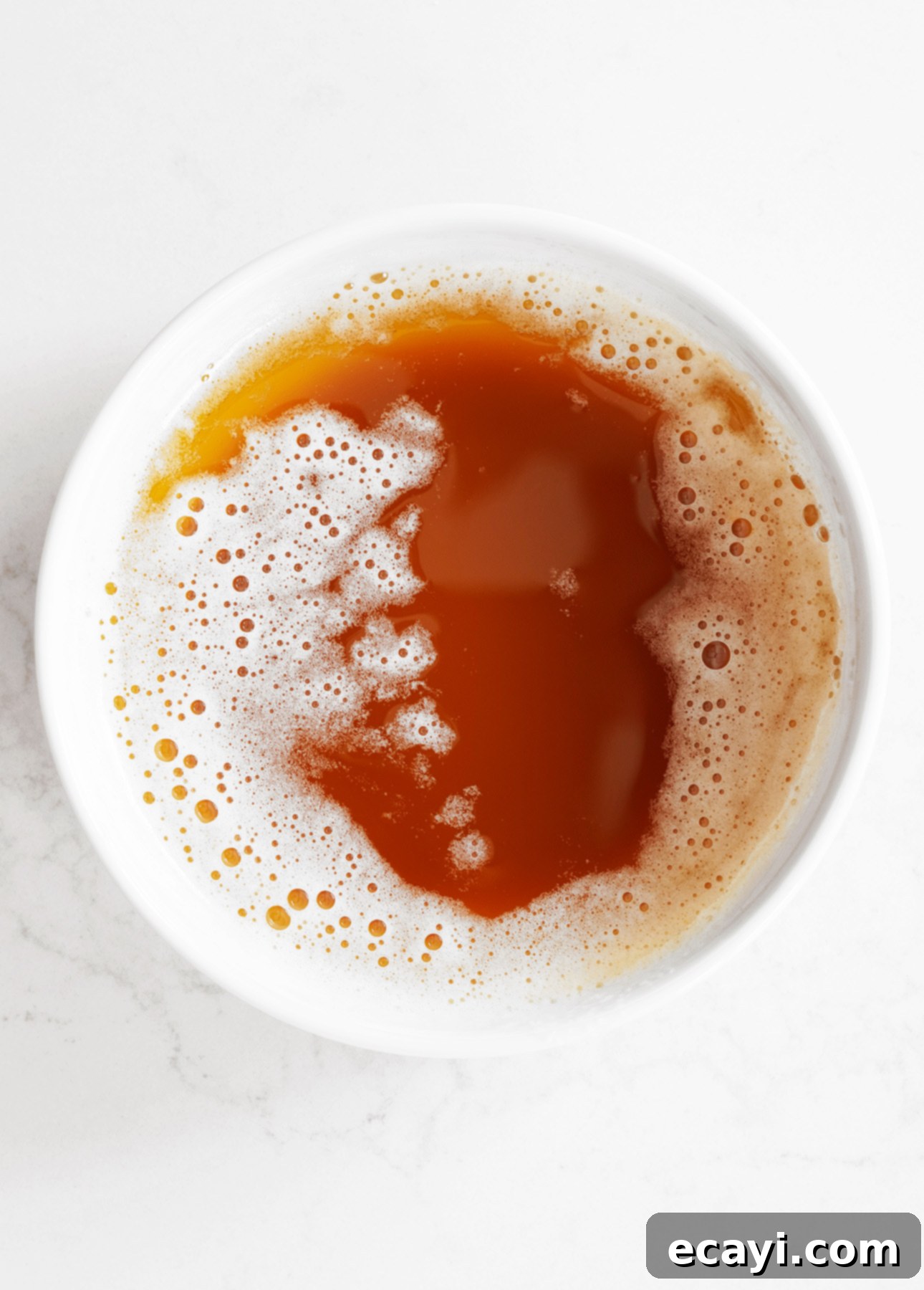The Ultimate Guide to Brown Butter (Beurre Noisette): Unlock Rich, Nutty Flavors for Sweet & Savory Dishes
Embark on a culinary journey to transform ordinary butter into an extraordinarily aromatic, sophisticated ingredient. This easy French technique, known as “Beurre Noisette,” unlocks a world of deep, nutty flavor, ready to elevate both savory and sweet dishes.
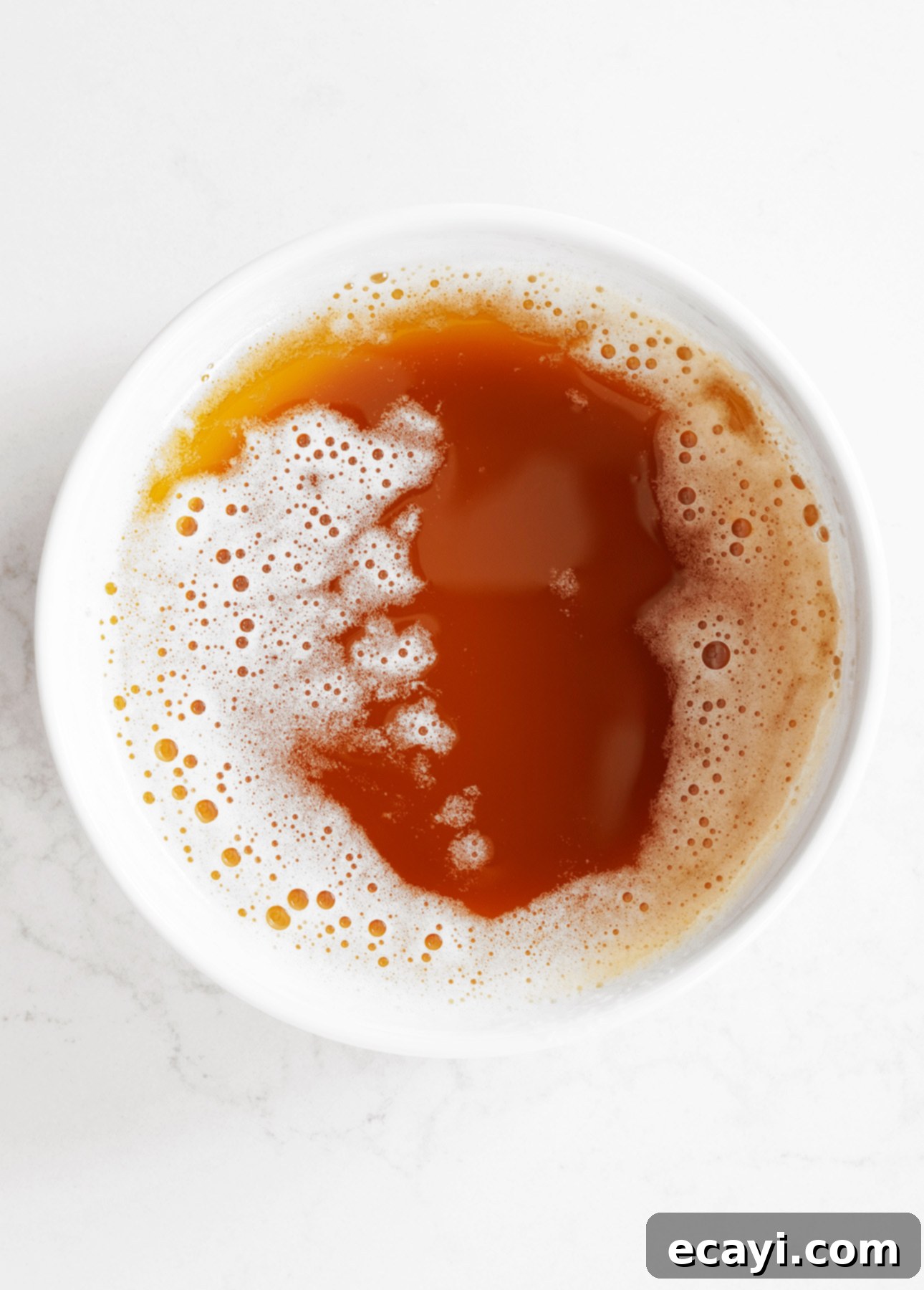
This post contains affiliate links. Full disclosure is at the bottom of the article.
Few ingredients offer such a profound transformation with so little effort as brown butter. Known in French as beurre noisette—literally “hazelnut butter” due to its enticing color and rich aroma—this simple yet sophisticated ingredient is a secret weapon for home cooks and professional chefs alike. Imagine a sauce that takes your fried eggs from good to gourmet, or a foundational flavor that deepens the complexity of your favorite baked goods. That’s the power of brown butter.
Traditionally a staple in classic French cuisine, particularly alongside delicate fish and vibrant vegetables, brown butter has evolved far beyond its humble origins. Today, its captivating nutty notes infuse a wide array of recipes, demonstrating incredible versatility in everything from elegant financiers to comforting pasta dishes. The best part? This truly easy French technique requires just one ingredient and can be mastered by any home cook, regardless of experience level. Using brown butter in your cooking is a guaranteed way to infuse your dishes with an unmatched depth of flavor and a touch of culinary magic.
In this comprehensive guide, we’ll delve into everything you need to know about brown butter: what it is, the simple steps to create it, how to seamlessly incorporate it into your favorite recipes, and discover new ways to make it the star of your kitchen. Get ready to elevate your cooking to an extraordinary level!
VIDEO: Your Visual Guide to Making Brown Butter (Beurre Noisette)
Sometimes, seeing is believing! Watch this step-by-step video to demystify the process of making brown butter. You’ll quickly realize it’s an easier technique than you think, and the world of flavor it brings to your dishes is truly transformative.
What Exactly is Brown Butter (Beurre Noisette)?
At its core, brown butter is simply butter that has been melted and gently cooked beyond its liquid state until its milk solids caramelize, transforming it into a “hazelnut” hue and releasing an incredible nutty aroma. This process is a beautiful culinary example of the Maillard reaction, a chemical interaction between amino acids and reducing sugars that gives browned food its distinctive flavor.
Here’s the science behind the magic: As butter melts, its three main components—butterfat, water, and milk solids—separate. The water evaporates, and the milk solids, which are tiny proteins and sugars, sink to the bottom of the pan. With continued gentle heat, these milk solids begin to toast and caramelize, undergoing the Maillard reaction. They turn from a creamy white to a delicate cinnamon, then a deep golden brown, eventually reaching a rich hazelnut color. This browning process is what creates the butter’s characteristic toasted, nutty flavor and intoxicating aroma, elevating it far beyond plain melted butter.
Brown butter is a marvelously versatile, one-ingredient sauce. In its delicious liquid form, it can be drizzled as a luxurious sauce or garnish over a variety of dishes, adding a gourmet touch to pan-seared fish, delicate pasta, or creamy risotto. Beyond its liquid application, brown butter can also be cooled and solidified. In this state, it can be used as a direct substitute for regular butter in many recipes, imparting an incredible depth of flavor to cherished baked goods like classic French financiers or rustic clafoutis. It’s a fundamental flavor builder that adds a layer of complexity to almost anything it touches.
Classic French financiers, showcasing the deep flavor brown butter provides.
How to Master the Art of Making Brown Butter
Making brown butter is remarkably simple, requiring just one ingredient and a few minutes of your time! The key is attentive observation and a suitable pan. Here’s how to do it perfectly every time:
Tools You’ll Need:
- Butter: High-quality unsalted butter (more on this below).
- Pan: A light-colored stainless-steel saucepan or skillet is ideal. The light color of the pan makes it much easier to monitor the butter’s changing hue, ensuring you don’t accidentally burn it. A non-stick pan can make it harder to see the brown bits.
- Utensil: A heat-resistant spatula, wooden spoon, or whisk for stirring.
- Bowl: A heat-proof bowl to transfer the brown butter into once it’s done, which stops the cooking process.
Step-by-Step Process:
- Melt the Butter: Place your butter in the stainless-steel pan over medium heat. Let it melt completely. As it melts, you’ll see it transform into a clear, golden liquid.
- Bring to a Gentle Simmer: Once melted, continue heating until the butter comes to a gentle simmer. It will start to foam and bubble. At this stage, the water content in the butter is evaporating.
- Cook and Watch Closely: This is the crucial stage. Reduce the heat slightly if necessary to prevent burning. Continue to cook, stirring almost continuously with your chosen utensil. Stirring ensures even cooking and prevents the milk solids from sticking and burning too quickly in one spot. As the water evaporates, the foaming will subside, allowing you to clearly see the milk solids at the bottom of the pan.
- Observe the Color and Aroma: Keep a very close eye on these milk solids. They will first turn a light golden color, then a rich cinnamon, and finally a beautiful, toasty hazelnut brown. Simultaneously, you’ll notice a distinct, intoxicating nutty aroma filling your kitchen—this is your signal! The time it takes will vary depending on the quantity of butter and your pan size, but it’s usually just a few minutes after simmering begins. Do not walk away! Brown butter can turn from perfectly golden to burnt in a matter of seconds.
- Stop the Cooking: As soon as the butter achieves that perfect hazelnut color and nutty aroma, immediately remove the pan from the heat. Pour the brown butter into a separate, heat-proof bowl. This is a critical step to halt the cooking process, as the residual heat in the pan can quickly take it from browned to burnt.
- Scrape the Goodness: Always make sure to scrape down all those precious brown bits from the bottom of the pan and transfer them to your bowl. These tiny, caramelized milk solids are pure flavor gold and contribute significantly to brown butter’s unique taste.
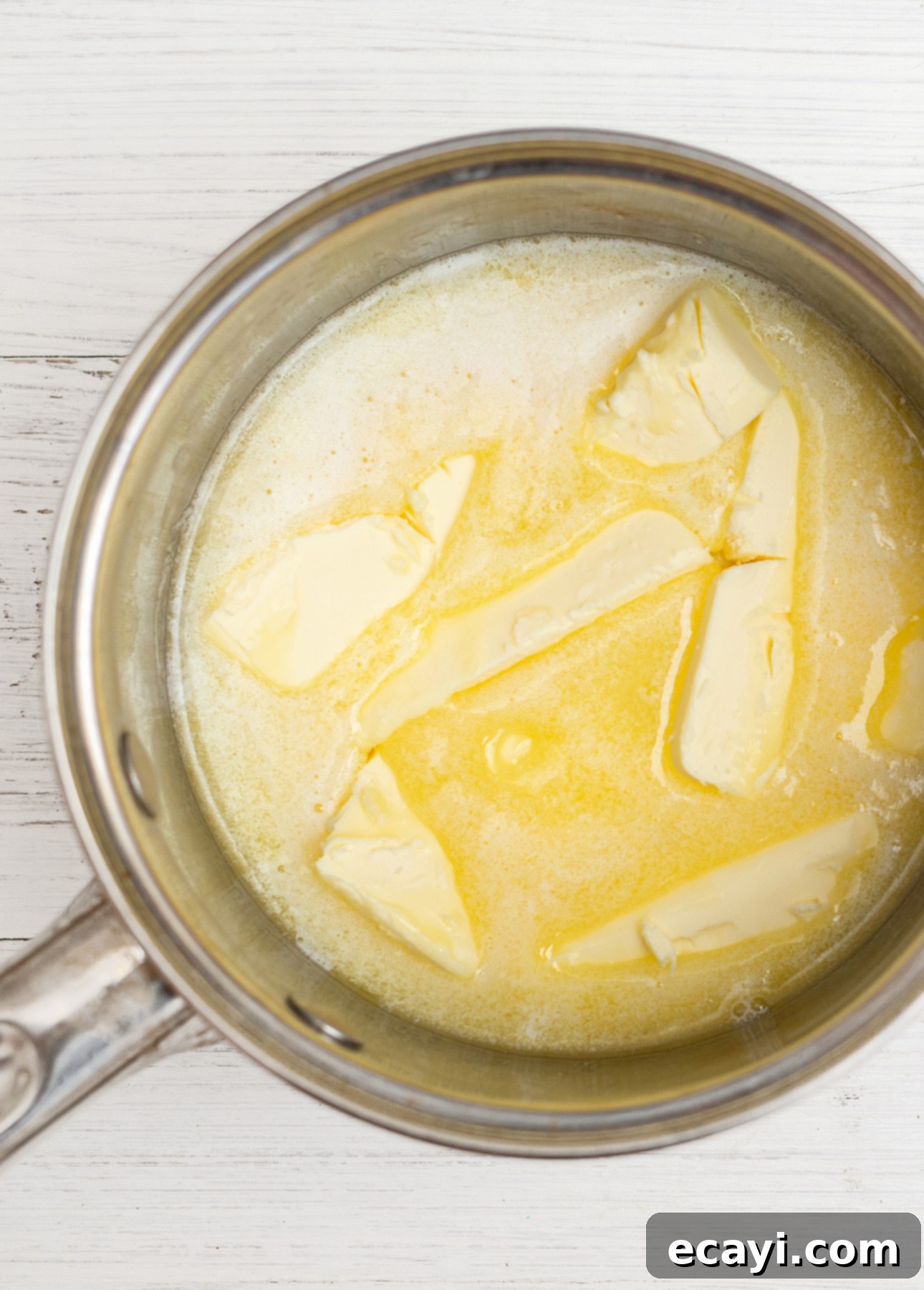
Pro Tip: If the butter foams excessively and obscures your view of the milk solids, lift the pan off the heat for a few seconds and gently swirl it. The bubbles will recede, allowing you to check the color, then return it to the heat to continue cooking.
Endless Culinary Applications: How to Use Brown Butter
One of brown butter’s most exceptional qualities is its incredible versatility. Its rich, nutty, and slightly sweet flavor profile allows it to shine in an astonishing array of dishes, bridging the gap between savory and sweet with effortless grace. Once you’ve made a batch, you’ll find countless ways to incorporate it into your daily cooking.
Savory Applications:
- Sauces and Dressings: Brown butter makes an instant, luxurious sauce for pasta, gnocchi, or ravioli. Combine it with fresh herbs like sage or thyme, a squeeze of lemon, and a sprinkle of Parmesan for a simple yet elegant meal. It also forms the base for exquisite salad dressings, adding depth to greens with roasted vegetables.
- Fish and Seafood: This is a classic pairing! Drizzled over pan-seared scallops, halibut, cod, or shrimp, brown butter elevates delicate seafood with its inherent richness and nutty notes. A touch of lemon juice often provides the perfect bright counterpoint.
- Vegetable Side Dishes: Transform humble vegetables into gourmet delights. Toss roasted or steamed asparagus, green beans, Brussels sprouts, or especially butternut squash with brown butter for an incredible depth of flavor.
- Pasta and Risotto: Beyond simple sauces, brown butter can be incorporated into the cooking process of risotto, adding a subtle nutty foundation. It also makes a fantastic finishing drizzle for any creamy pasta dish.
- Beyond the Basics: Try it over simple fried eggs, scrambled eggs, or even as a base for savory tarts and quiches. Its umami qualities can enhance almost any savory preparation.
Roasted Butternut Squash Risotto with Brown Butter and Sage
Sweet Applications:
The nutty flavor of brown butter works absolute wonders in desserts, adding sophistication and complexity that plain butter simply can’t match.
- French Pastries: Beurre noisette is the indispensable central ingredient in elegant French financiers, giving them their characteristic golden color and rich flavor.
- Baked Goods Requiring Melted Butter: For recipes that call for melted butter, a direct swap with cooled brown butter is often a revelation. Think chewy blondies, muffins, quick breads, or even a simple cake batter. The brown butter will infuse a warm, toasted flavor that makes these treats irresistible.
- Recipes Using Room-Temperature or Solidified Butter: You can also cool and solidify brown butter (by refrigerating it until firm) and then use it in recipes that call for creaming butter, such as classic chocolate chip cookies, banana bread, or pie crusts. The subtle nuttiness adds an incredible extra dimension of flavor that will leave everyone asking for your secret ingredient.
- Crumbles and Crisps: Incorporate brown butter into the crunchy topping of fruit crisps and crumbles for an elevated, deeper flavor.
- Buttercream: For an truly “out of this world” experience, use brown butter to make buttercream frosting. Its rich, toasted notes complement chocolate, vanilla, and fruit flavors beautifully.
Once you discover how easy it is to make brown butter, you’ll be eager to incorporate it into nearly every dish. And that’s a fantastic impulse! Very few dishes won’t be improved by the addition of a spoonful—or even a generous half-cup—of this golden, aromatic goodness. It’s a game-changer for your culinary repertoire.
Recipes That Celebrate Brown Butter
Ready to put your brown butter skills to the test? Here are some fantastic recipes that truly highlight the incredible aroma and flavor of beurre noisette:
- Roasted Butternut Squash Risotto with Brown Butter and Sage: A comforting, flavorful main course.
- Brown Butter Apple Blondies: Chewy, sweet, and bursting with autumnal flavors.
- Cherry Clafoutis Bars: A delightful, easy-to-share dessert.
- Classic French Financiers: The quintessential brown butter pastry, elegant and delicious.
- Black Sesame and Chocolate Financier Cake (pictured below): A modern twist on a classic, showcasing brown butter’s versatility.
For even more brown butter recipe inspiration, explore my full recipe collection on the blog!
Baked Treats That Reach New Heights with Brown Butter
Why stop at specific recipes? Many classic desserts can be significantly enhanced by simply substituting regular butter with liquid or solidified beurre noisette. You might never go back to plain butter again!
- Breakfast Staples: Take your crêpes, pancakes, and waffles to an entirely new level of deliciousness. Use melted brown butter in the batter for a richer, nuttier taste that pairs beautifully with syrups and fruits.
- Quick Breads & Muffins: Incorporate brown butter into your favorite banana bread, pumpkin cake, or muffin recipes. The depth it adds transforms a simple bake into something truly special.
- Granola: Drizzle brown butter over your granola mix before baking for a deeply toasted, irresistible flavor that will make your breakfast extraordinary.
- Crisps and Crumbles: When making the crunchy topping for fruit crisps and crumbles, swap out regular butter for brown butter. The caramelized milk solids will make the topping even more flavorful and addictively crunchy.
- Cheesecakes & Pressed Crusts: For cheesecakes or other desserts with a pressed cookie or graham cracker crust, use brown butter instead of melted plain butter. It adds a gourmet touch and a warm, nutty foundation.
- Cookies: Brown butter is a revelation in cookies. Its rich flavor pairs perfectly with chocolate chip cookies, oatmeal cookies, or snickerdoodles, adding a chewiness and depth that’s hard to beat.
- Buttercream (Not a Baked Treat, But Essential!): As mentioned, brown butter buttercream is truly spectacular. It’s perfect for frosting cakes, cupcakes, or even filling macarons, offering a sophisticated twist on a classic.
Selecting the Best Butter for Beurre Noisette
When a single ingredient takes center stage in a recipe, the quality of that ingredient directly impacts the final result. This principle is especially true for brown butter. Since brown butter is often used as a sauce or a prominent flavor enhancer, its intrinsic taste is front and center. Therefore, it’s wise to invest in the best quality butter you can reasonably afford.
My top recommendation is to use high-quality European-style butter. These butters typically have a higher butterfat content (around 82-84%) compared to many mass-market American brands (which are usually around 80%). This higher fat content results in less water, meaning the butter browns more efficiently and develops richer flavors, with more of those precious milk solids to caramelize. The resulting brown butter will be more intensely flavored and have a silkier texture.
Furthermore, I strongly recommend using unsalted butter. This allows you complete control over the seasoning of your finished dish. While salted butter can be browned, the salt content can intensify as the water evaporates, making it difficult to adjust the overall salinity of your recipe. For delicate desserts or savory dishes where you want precise seasoning, unsalted butter is the way to go.
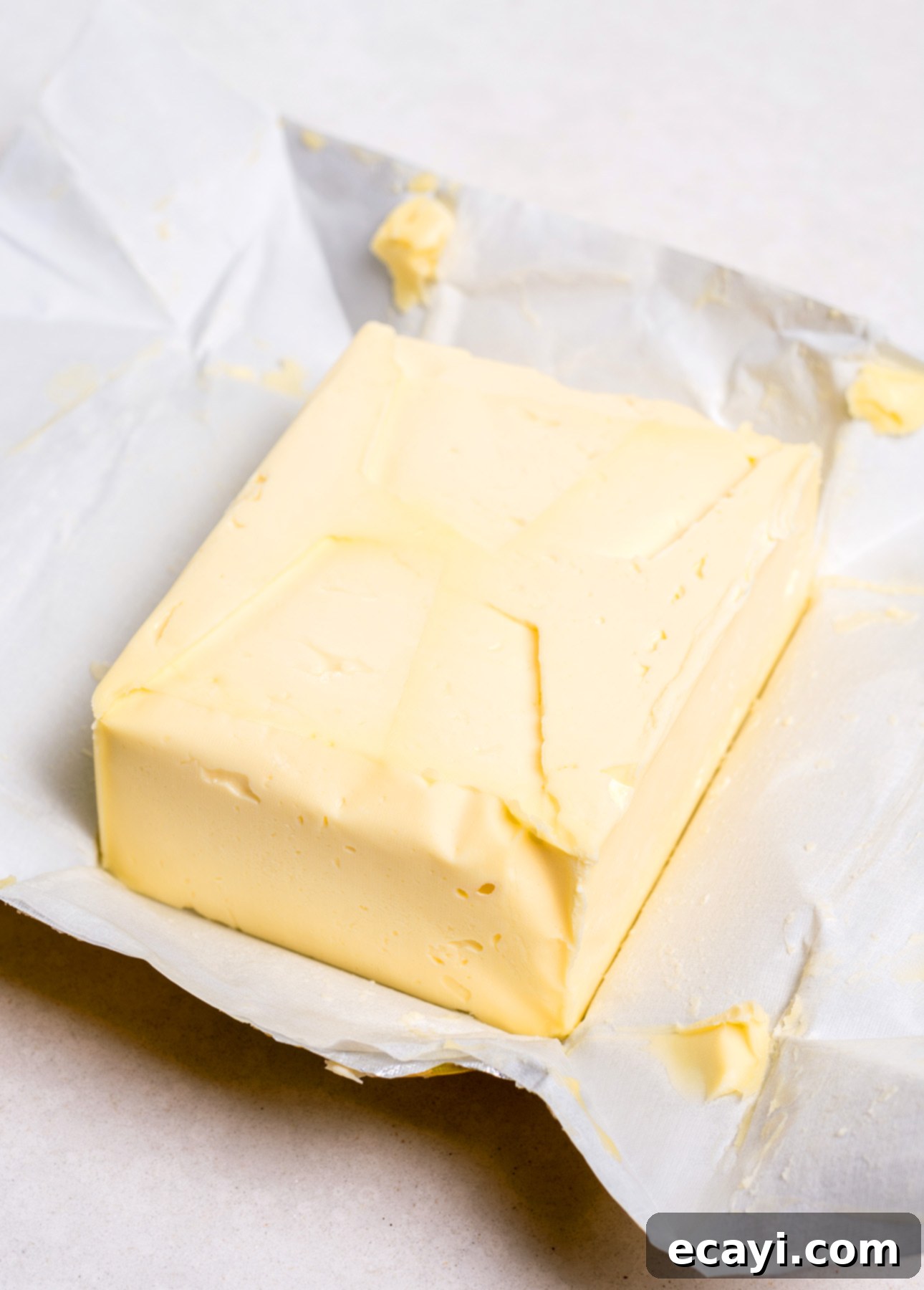
Irresistible Brown Butter Flavor Pairings
While brown butter is incredibly versatile and pairs well with almost anything, some ingredients are simply destined to be together. Their flavors create a synergistic harmony that makes them perfect matches:
- Fish: Especially delicate white fish like halibut, cod, or sole. The richness of the butter complements their mild flavor beautifully.
- Shellfish: Scallops, shrimp, and crab meat are elevated by brown butter’s nutty warmth. A drizzle over pan-seared or grilled shellfish is exquisite.
- Squash: Butternut squash, pumpkin, and other winter squashes. Their inherent sweetness and earthy notes are dramatically enhanced by brown butter.
- Fresh Herbs: Sage is an iconic pairing, but rosemary, thyme, and even parsley also work wonderfully, adding a fresh counterpoint to the butter’s depth.
- Nuts: Naturally, brown butter’s hazelnut-like flavor harmonizes perfectly with actual nuts, especially hazelnuts, pecans, walnuts, and almonds. Use them together in baked goods or as a garnish.
- Fruits: Bananas, pears, and peaches. Their sweet and sometimes tart profiles are beautifully balanced by the rich, toasted notes of brown butter. Think brown butter banana bread, pear tarts, or peach cobbler.
- Spices: Cinnamon, nutmeg, and cardamom. These warming spices enhance the natural warmth of brown butter, making them ideal for autumnal and festive dishes.
- Maple Syrup & Honey: These natural sweeteners amplify the caramel notes in brown butter, creating a delightful sweetness.
How to Store Brown Butter for Future Delights
Once you’ve made a batch of brown butter, you’ll want to ensure you can enjoy its fantastic flavor for as long as possible. Proper storage is simple:
- Refrigeration: Pour the cooled brown butter into an airtight container or jar. It will solidify in the fridge. Store it for up to 1 week. When ready to use, you can gently remelt it over low heat, or let it come to room temperature if the recipe calls for solid butter.
- Freezing: For longer storage, brown butter freezes exceptionally well. Again, pour it into an airtight container or a freezer-safe bag. It can be frozen for up to 1 month. You can also freeze it in smaller portions (e.g., in an ice cube tray) for easy access to specific amounts. Thaw it in the refrigerator overnight or gently melt from frozen for immediate use.
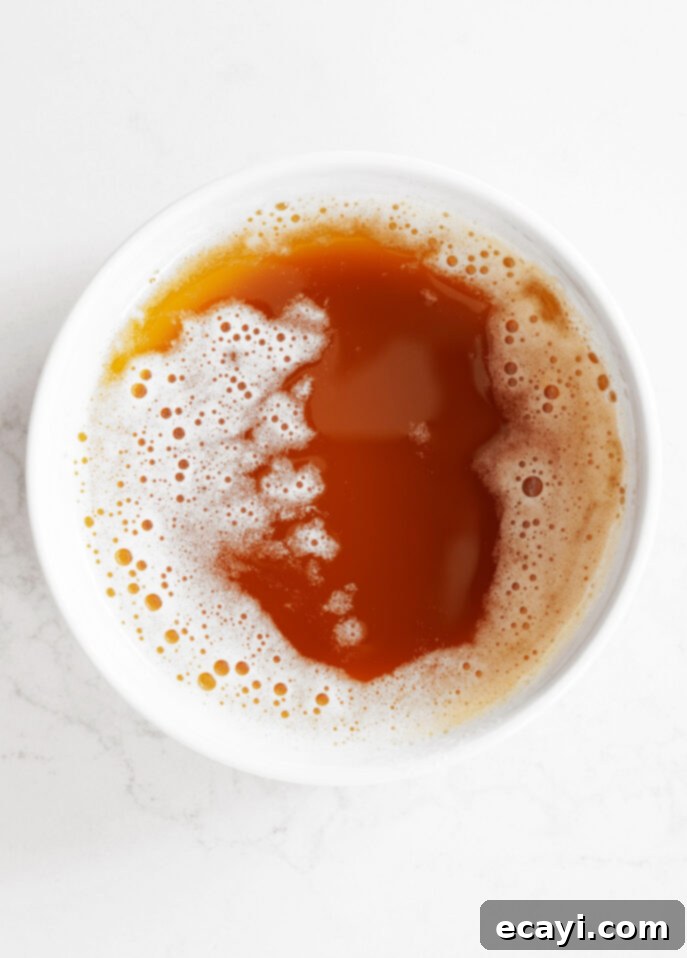
Pin Recipe
Brown Butter Recipe
Ingredients
- ½ cup unsalted butter (adjust the quantity of butter according to the recipe you’re making)
Instructions
-
In a small stainless steel saucepan set over medium heat, warm the butter until completely melted and simmering.
-
Keep on cooking over low heat, swirling the pot from time to time. The butter will bubble up as the water evaporates, which will prevent you from watching closely over the color changing. When that happens, lift the pot off the heat for a few seconds, swirling it gently until the bubbles recede, then put back on the heat.
-
Stir the butter continuously using a spatula, a wooden spoon, or a whisk, and keep a close eye on its color changing. Brown butter is ready when the milk solids at the bottom of the pot turn a nicely toasty hazelnut brown color and the concoction gives off a delicious nutty hazelnut aroma. The time it takes varies according to the quantity of butter and the size of the pan you’re using, but it’s usually done in just a few minutes.
-
When the brown butter is ready, remove the pan from the heat, pour the brown butter into a small bowl or a container to stop the cooking process. Always make sure to scrape down all those brown bits from the bottom of the pan, because that’s where the flavor is!
-
If the recipe you’re making uses melted brown butter, you can use it right away.
If you’re using melted brown butter in a dessert, it’s usually best to let it cool for about 10 minutes before you incorporate it into a batter.
If the recipe you’re making uses solidified brown butter, refrigerate it for a few of hours until cold and firm.
-
STORAGE: Brown butter keeps refrigerated in an airtight container or jar for up to 1 week, or frozen for up to 1 month.
Video
Did you make this?
Tell me how you liked it! Leave a comment or take a picture and tag it with @foodnouveau on Instagram.
Disclosure Notice: This site is a participant in the Amazon Associates Program, an affiliate advertising program designed to provide a means for the site to earn fees by linking to Amazon and affiliated sites.
If you click on an affiliate link, I may earn advertising or referral fees if you make a purchase through such links, at no extra cost to you. This helps me create new content for the blog–so thank you! Learn more about advertising on this site by reading my Disclosure Policy.
